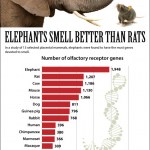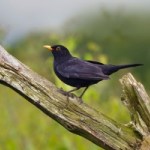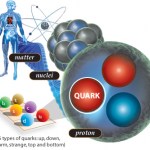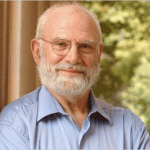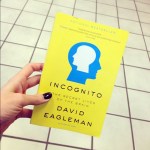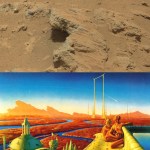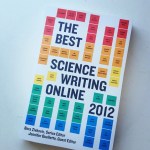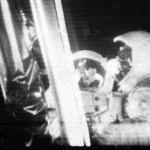Human
Photo of a Greenland shark from Wikipedia.
A multi-national team of scientists sought to determine the age of Greenland sharks (Somniosus microcephalus). These animals grow rather slowly (about 1cm per year) and are the largest fish in the arctic (>500 cm long), but their longevity was not yet known. The team used radiocarbon dating of crystalline proteins found within the nuclei of the eye lens. Because these proteins are formed prenatally, they offer a rather accurate way to estimate an animal's age. Their findings, published in Science…
Like Aesop's fable, rats have another reason to be envious of elephants. Elephants also have significantly more genes that can detect different smells (i.e. olfactory receptor genes) than other super-sniffers like rats and dogs. In fact, compared to 13 other species, African elephants have 1,948 genes related to smell putting them ahead of the previous record holder, rats that only have about half as many genes. Primates have much fewer with only 296-396 of these olfactory receptor genes. Interestingly, the common ancestor of mammals had 781 olfactory genes, meaning that primates have lost…
Image from U Penn.
I came across this really interesting press release from the University of Pennsylvania that I just had to share.
Despite having a close relationship with dogs for thousands of years, we are still making new discoveries about our canine friends. Drs. William Beltran (School of Veterinary Medicine), Artur Cideciyan (Perelman School of Medicine), and colleagues teamed up to study canine eyes in an effort to improve treatments for humans with retinal diseases.
Dr. Beltran was quoted as saying “It’s incredible that in 2014 we can still make an anatomical discovery in a…
A golden retriever in a fMRI scanner. Image by ENIKO KUBINYI from The Scientist.
A paper published in Current Biology describes research using functional magnetic resonance imaging (fMRI) to compare the sound processing regions of brains in humans and dogs (border collies and golden retrievers). The subjects listened to almost 300 sounds (vocalizations from dogs and humans as well as non-vocal sounds) or no sound as a control. They used the fMRI to locate sound-sensitive regions (auditory cortex) in the human and dog brains. Not surprisingly, the human auditory cortex was mostly (87%)…
Blackbird image from: Ernie Janes/naturepl.com
A recent study has provided some evidence supporting the hypothesis that light and noise pollution alters the biological clocks of birds living in cities (compared to birds living in rural areas).
Dr. Dominoni (Max Planck Institute for Ornithology, Germany) and colleagues used radio-pulse transmitters attached to European blackbirds (Turdus merula) living in Munich, Germany (city) and those living in a forest nearby to track the animal's activity levels. They found that blackbirds living in the city showed…
Image of atopic dermatitis from www.itchfreepet.com
Dr. Kerstin Lindblad-Toh at Uppsala University (Sweden) who specializes in comparative genomics and Dr. Åke Hedhammar, SLU (Sweden) recently identified a novel gene in German shepherd dogs, PKP-2, that encodes a protein (plakophilin-2) important for regulating proper skin structure and function. This protein was found to be associated with canine atopic dermatitis (i.e. doggy eczema), a condition that affects 3-10% of man's best friends. Researchers hope that the discovery of this gene relationship may lead to better understanding of…
"The atoms come into my brain, dance a dance, and then go out - there are always new atoms, but always doing the same dance, remembering what the dance was yesterday." -Richard Feynman
Here you are, a human being, a grand Universe of atoms that have organized themselves into simple monomers, assembled together into giant macromolecules, which in turn comprise the organelles that make up your cells. And here you are, a collection of around 75 trillion specialized cells, organized in such a way as to make up you.
Image credit: J. Roche at Ohio University.
But at your core, you are still just…
Writing for the Internet is like yelling into the void: freeing, probably more than a little cathartic, but ultimately lonely. That's not to say that I haven't made profound connections out here, but like most writers I long for a little thing with my name on it that fits in the hand, that can be passed around and earmarked, tossed away and re-discovered.
Which is why I'm so pleased to announce the existence of precisely such a little thing: my brand-new collection of essays and arcana, High Frontiers, fresh from the presses of Publication Studio:
High Frontiers brings together…
"This one will look like a jellybean," the session director warns us. "Or, you know, when you empty a hole punch? The circles of paper that fall out? One of those." She's talking about Neptune, and I am about to step, carefully, up a ladder painted industrial yellow and wheeled into place in front of the centenarian eyepiece of the 60" Hale telescope at Mt. Wilson Observatory, incidentally the very place where Edwin Hubble, in 1925, discovered that our galaxy was not the entirety of the Universe, and later, that our Universe was expanding.
A jellybean, a piece of confetti: it seems her…
I probably don't need to introduce Oliver Sacks to you. You've undoubtedly already delighted over his wobbly affectation and tales of neurological strangeness on RadioLab or NPR. You might have read his lovely first-person account, in the New Yorker, of his early experiments with hallucinogens of all stripes, from the "pharmacological launch pad" of amphetamines and LSD, to the synthetic belladonna-like drug, artane. You may even have read one of his bestselling books of clinical studies, like The Man Who Mistook His Wife for a Hat or Awakenings.
I interviewed Dr. Sacks in 2007, on the…
The history of science can be read as a series of brusque reality checks. Once, we thought the sun revolved around the Earth, but modern astronomy relegated our real estate, incrementally, from the center of everything to a hum-drum corner of an unimportant galaxy in a handful of generations. The theory of Evolution turned us from mini-gods into just a consequence of squicky biological randomness. The decipherment of the structure of DNA and the human genome turned the spark of life into something that can be written down, stored, and analyzed by computers. Again and again, we…
Stewart Brand, writing about space colonies, observed that "if you live in a satellite, the Earth is something that goes on in your sky."
For Felix Baumgartner, the daredevil skydiver who seduced the world with his chiseled jaw and seeming invulnerability to fear (and who broke the sound barrier with his body last weekend) the Earth is something else. The satellite he leapt from, a weather balloon 24 miles above the Earth, wasn't his home. But briefly, and especially for the millions who watched the gossamer balloon float upwards to the strange blue-black gradient of space's edge, it…
I just watched a funny entry submitted for the 2012 American Physiological Society's (APS) video contest on some of the differences betweens humans and dogs. The authors of the video were Nate Brault and Thomas Szamocki from Beloit College. It is also available in the APS Archive of Teaching Resources, a searchable archive of teaching resources and activities to help teach K-12 as well as college students about physiology.
The space-heads among you have undoubtedly heard about the Curiosity rover's first significant discovery: the remnants of an ancient streambed on Mars, which would seem to indicate the presence of water in the planet's history. This jagged pile of alluvial rock and dust may not look like much, but it brings to mind one of my favorite pieces of Martian historical arcana.
For a time in the late 19th century, it was believed that there were canals on Mars.
The Italian astronomer Giovanni Schiaparelli, who observed Mars in 1877, was the first to describe, name, and lovingly illustrate…
I've been practicing little idiosyncratic rituals on this corner of the web for years: learn something new, obsessively research, get lost in the idea, scribble, converse endlessly, then write. This blog, Universe, has never been about garnering hits or materializing an audience because, for me, thinking and writing about science is a personal tic. I can't help but yell into the void; I understand science as a poetic language for explaining reality, and when I see changes in that language all I want to do is unfasten myself into them.
I definitely don't seek any form of recognition for what…
Damage to the auditory nerve connecting the inner ear and brain causes hearing loss in some individuals. Researchers Dr. Marcelo Rivolta from the University of Sheffield and colleagues have shown that human embryonic stem cells that were differentiated into auditory nerve cells can improve overall by ~45% hearing in gerbils that were treated with ouabain to damage the nerves. Ten weeks after transplantation, some of the differentiated cells were shown to grow projections that connected with the brain stem and the animals could perceive more faint sounds.
Of course the purpose…
You may recall a prior post in which I talked about how intelligent crows are. In fact, there was a special on PBS demonstrating their ability to solve problems and even recognize human faces (HIGHLY recommended if you haven't yet had a chance to see it):
Watch A Murder of Crows on PBS. See more from Nature.
In a more recent study, Dr. Marzluff and colleagues used brain scans to demonstrate that crows not only remember faces, but they can also remember how they were treated by various people. In the study, his team captured 12 wild American crows while wearing latex "…
I just watched this neat presentation given a few years back by Dr. Robert Sapolsky from Stanford University on the differences and similarities between humans and animals:
Yesterday we lost Neil Armstrong, an accidental hero, thrust by fate onto a rock in the sky. Many dreamt of walking on the moon before he did, and a few men did after him. He happened to be the first. Hopefully many more men, and women too, will echo his iconic footsteps in the future. Perhaps even future space tourists will huddle around Tranquility base, laying nostalgic 60s filters over their high-resolution snapshots of an upended American flag from a long-ago mission.
We can only hope. A lot of my favorite humans have died this year: Armstrong, Sally Ride, Ray Bradbury, all people who…
The NASA Mars rover Curiosity just landed on Mars. Those of us who tuned in vicariously via NASA's live coverage watched as a roomful of tense engineers exploded, and heard their disembodied voices whispering and booming through the control room. Holy shit. We did it. Their headsets fell askew, they glad-handed one another, criss-crossing the room, and then, immobilized by a sudden hush as the news spread: We've got thumbnails.
Thumbnails. We watched as a tiny image formed, transmuted across the void of space and into this room. It was black and white, an indistinguishable gesture of light…
